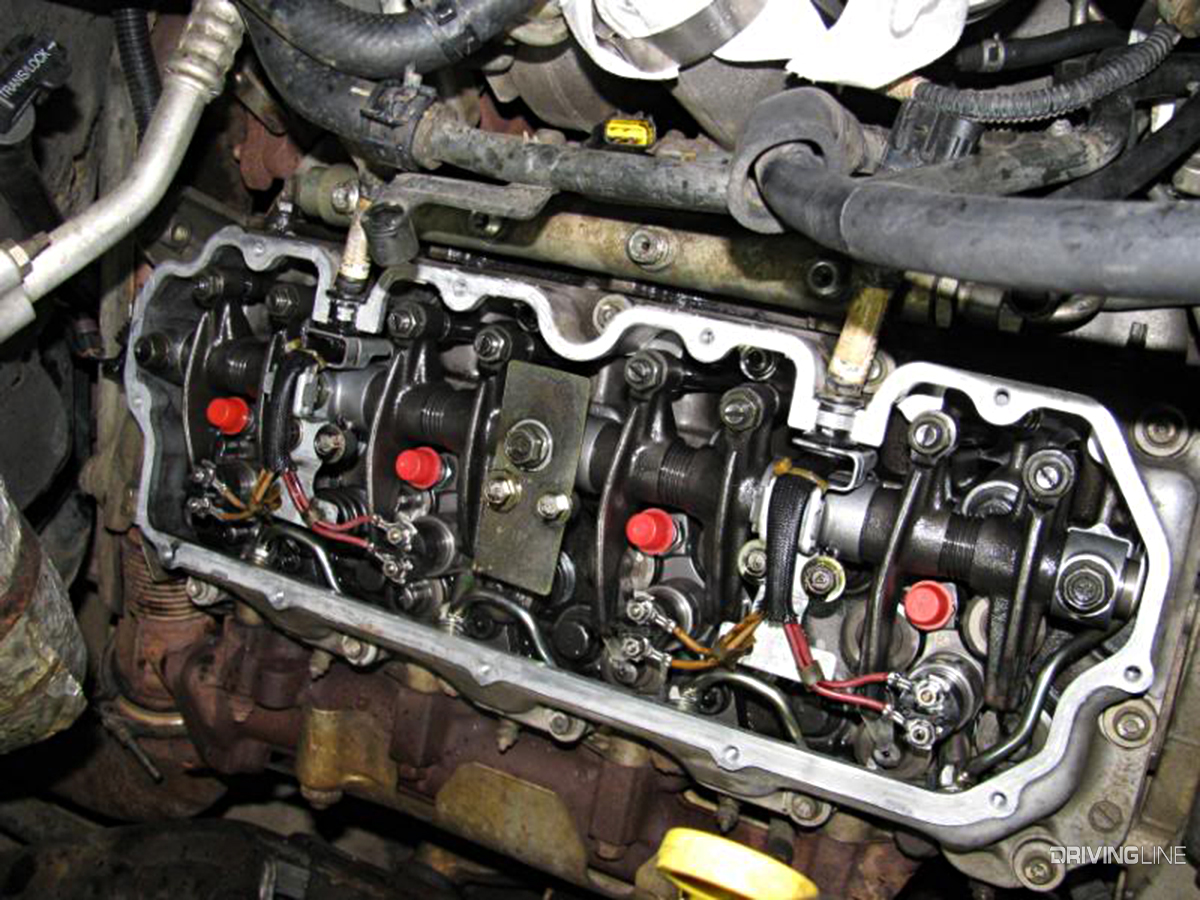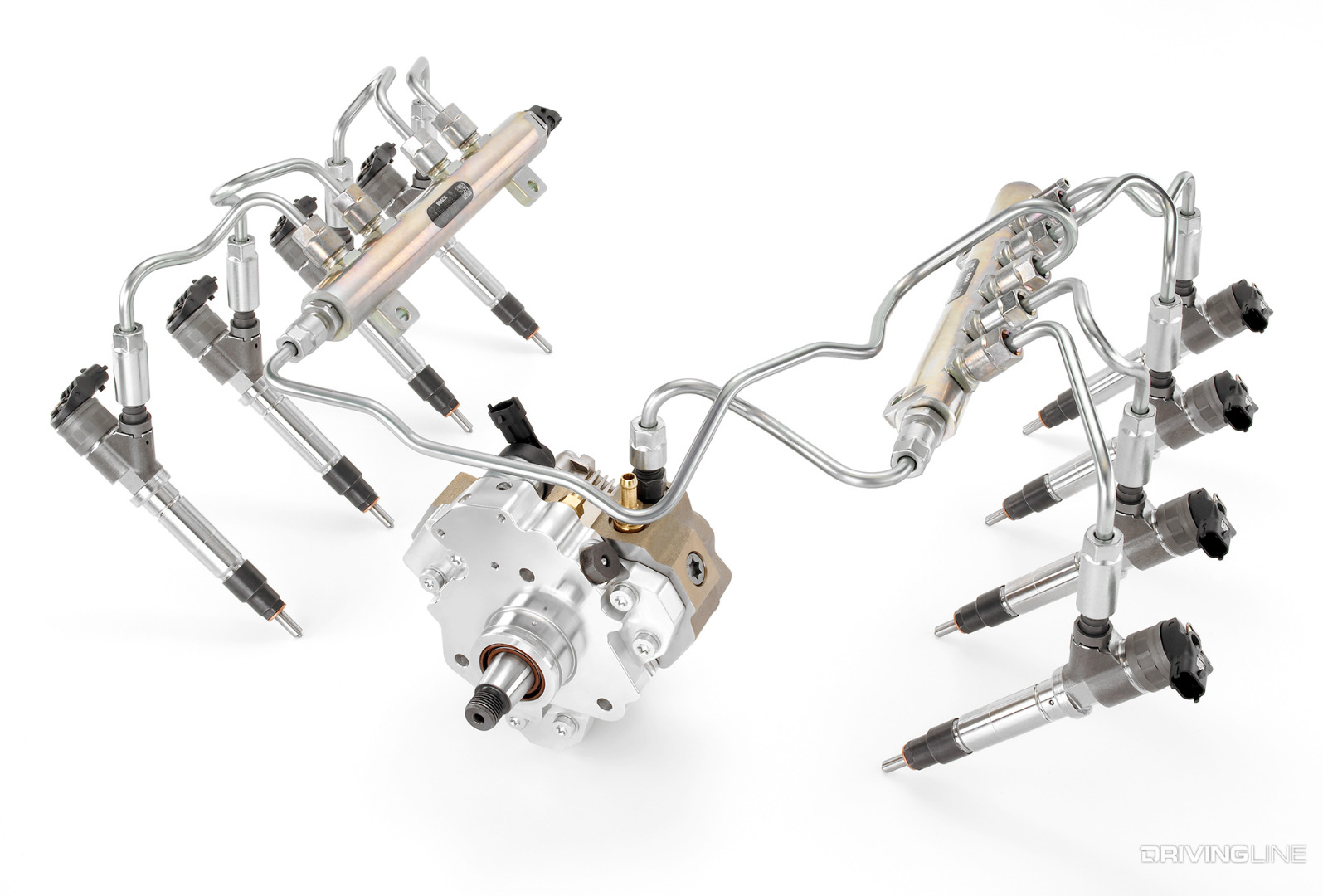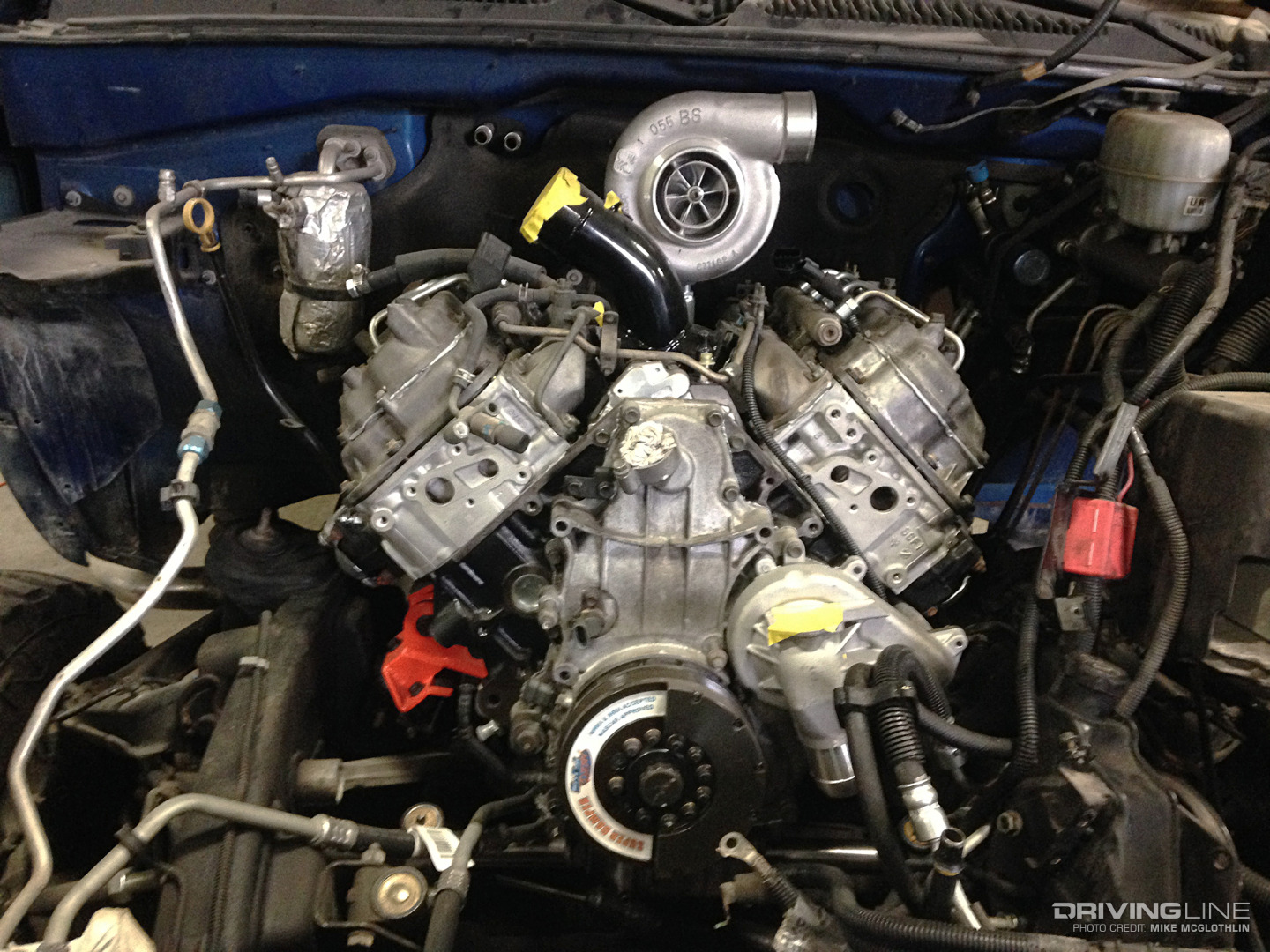Here at Driving Line, we’ve spent inordinate amounts of time spelling out just how capable the Duramax is in the performance sense, but we’ve never poured over the finer details—the nuts and bolts—that make GM’s 6.6L V8 such a robust platform. After producing the ill-fated 5.7L, the underpowered 6.2L and the problematic 6.5L indirect injection (IDI) engines, the folks at GM knew their next diesel venture had to be a winner. Upon joining forces with Japanese engine manufacturer, Isuzu, the Duramax was born—and it delivered. The inaugural Duramax, RPO code LB7, would bring the first aluminum cylinder heads to the diesel pickup segment, introduce the same market to common-rail injection and also make its power in a much cleaner, quieter manner than the competition (i.e. the 7.3L Power Stroke and the 24-valve 5.9L Cummins).
Right out of the gate, the LB7 Duramax packed considerably more punch than its rivals. With 300hp and 520 lb-ft of torque on tap (vs. the 7.3L Power Stroke’s 235hp and 500 lb-ft and the 5.9L Cummins’ 235hp, 460 lb-ft figures), the LB7 was king on paper. Out in the real-world, it went about its work quietly and efficiently, with many ¾-ton Chevy and GMC HD owners reporting fuel economy numbers as high as 22 mpg on the highway. Over time, and aside from the infamous fuel injector issues, the LB7 proved to be one of the most reliable diesel engines ever produced. GM’s first Duramax also provided a sound platform from which the General could build. Stay tuned for Part 2, where we’ll explore the second-generation Duramax, the LLY version, from top to bottom.
LB7 Hard Facts
| Production | '01-'04 | Heads | Cast aluminum, six 14mm diameter head bolts per cylinder (with sharing) |
| Design | 90-degree V8 | Valvetrain | OV, four-valve per cylinder, single cam |
| Bore | 4.06 inches | Injection System | Bosch high-pressure common rail, direct injection |
| Stroke | 3.9 inches | Injectors | Bosch solenoid (under valve cover) |
| Displacement | 6.6L (403ci) | Injection Pump | Bosch CP3 |
| Compression Ratio | 17.5:1 | Turbocharger | IHI RHG6 fixed geometry (with wastegate) |
| Block | Deep-skirt, cast iron (gray iron alloy) | Intercooler | Air-to-air |
| Rods | Forged steel, fractured | Horsepower | 300hp at 1800 rpm |
| Pistons | Cast-aluminum | Torque | 520 lb-ft at 1800 rpm |

Cast from gray-iron at General Motors’ Defiance, Ohio facility, the bare blocks arrived at DMAX Ltd. in Moraine (where all engines have been assembled since July of 2000) void of head bolt holes. Each block was then treated to a boring process to ensure the cylinders were perfectly round and squared to the deck surfaces. The crankshaft was positioned within the deep-skirt block and secured via main bearing caps that utilized side bolts in addition to the two traditional main bolts.
Induction Hardening

The upper two inches of the cylinder bores were induction hardened to resist cylinder wall wear from piston ring travel. This process was not common (nor was it required) on compacted graphite iron (CGI) blocks, which in 2018 is what most V-type crankcases are made out of (however, GM has yet to build a Duramax with a CGI block).
Forged-Steel Crank

Forged from 4340, the LB7’s crankshaft was machined, balanced and treated to the Tufftride process to increase fatigue strength. In addition, all cranks were heat-treated (nitrided) at DMAX Ltd. to create a case-hardened surface. To keep the crankshaft as dense as possible, balance weight was added to the crankshaft pulley and the flex plate. The rod bearings received oil lubrication thanks to oil passages that run from each journal to the connecting rod pin.
Cracked-Cap Rods

The connecting rods are also forged-steel pieces. They feature a fractured (cracked) cap design on the big end, which ensures precise fitment (and utmost longevity for the rod bearing) when being installed on the crankshaft’s rod journals. The rod caps are secured via bolts. In the performance world, LB7 rods are known to bend somewhere around the 600rwhp mark (shown above), but we’ve seen them both survive 700rwhp yet “shrink” in applications making a little over 550rwhp.
1,272 Grams

Made from cast-aluminum, the pistons used in the LB7 engine were the some of the lightest ever employed in a Duramax mill. The top compression ring underwent what’s called a physical vapor deposition (PVD) process (or ion plating for ultimate durability) before being installed. A ring carrier was also integrated into the piston’s top ring groove during the casting process. The underside of each piston received a spray of oil to keep it cool no matter the working conditions.
Aluminum Heads

Each four-valve aluminum cylinder head was gravity-cast by Isuzu in Japan, but the final machine work took place at DMAX Ltd. in Moraine. This entailed CNC machining the heads to accept valves, head bolts and injector hold-downs. Each cylinder head makes use of two forged-steel rocker arms per set of intake and exhaust valves, with each rocker arm using a guideless bridge to operate two valves. Long-term durability is enhanced with the rocker arm’s point of contact at the bridge entailing a sintered iron tip and the bridge featuring a hardened steel cap. For ultimate combustion sealing (i.e. head gasket life) and as has previously been mentioned, the heads attach to the block by way of six head per cylinder (18 per head).
Fixed Geometry Turbo

The RHG6 model turbocharger aboard the LB7 marked the only time a fixed geometry unit was used on a Duramax. Manufactured by IHI Turbo America, the RHG6 sported a 60.6mm (inducer) compressor wheel and a 68mm (exducer) turbine wheel, along with a wastegate. In factory form, the IHI charger sees a maximum peak boost of 22 to 24 psi. With aftermarket ECM tuning and an aftermarket boost increase valve in the mix, boost can easily jump to 30 psi or more. When leaned on, this OEM turbo can support 500rwhp—but anytime extra horsepower is added to the equation in conjunction with a disabled wastegate, the charger is prone to overspeeding.
High-Pressure Common-Rail

Even though it’s in use on all diesel engines bound for pickup trucks today, the high-pressure common-rail injection system used on the LB7 marked the technology’s debut in the light-duty truck market. Sourced from Bosch, the system relied on a CP3 pump to pressurize fuel as high as 23,000 psi, stored the pressurized diesel in two rails (one for each bank) and delivered fuel in-cylinder via eight solenoid style injectors. Injection events were precisely controlled electrically for clean, efficient power production and pilot injection made for a quieter running engine.
CP3

Plucked from Bosch’s heavy-duty injection pump lineup, the CP3 used on the LB7 enjoys tremendous reliability. Aside from the occasional failure of the fuel pressure regulator (also known as the MPROP or FCA), the pumps themselves rarely fail. In Duramax applications, where no factory lift pump was offered, the CP3 was equipped with a suction throttle to help pull fuel from the tank. As the fuel drawn into the CP3 enters the pump’s high-pressure circuit, it’s converted from 0 to 15 psi to as much as 23,000 psi. The pressurized fuel leaving the CP3 is stored in the fuel rails until it’s required by the injectors.
Injectors

Pioneering high-pressure common-rail in the diesel pickup segment came with some growing pains, as the LB7 was notorious for both leaky and cracked injectors. In instances where leaking occurs, it’s due to erosion and/or wear of the non-hardened internal ball seat, which is no longer able to fully seal the injector. The other scenario pertains to the injector body itself, which was prone to cracking. Recognizing the problem, GM issued a special policy concerning injector failure that allowed qualifying owners free injector replacement for a period of seven years or 200,000 miles (whichever came first). Thankfully, higher quality injectors are available from Bosch today, and leaking and cracking LB7 injectors are a thing of the past.
Tight Packaging

While any V8 (even a 90-degree) packages fairly well, most people don’t know the extent to which GM and Isuzu went to ensure the Duramax engine’s overall package size was as compact as possible. For instance, coolant piping complexities were avoided by routing coolant to each cylinder bank through a coolant passage in the flywheel housing. Positioning the high-pressure fuel rails, CP3 injection pump and turbocharger in the lifter valley also contributed to the tight overall packaging that was intended. The LB7’s approximate engine dimensions check in at 30 inches (length) by 30 inches (width) by 32 inches (height), whereas the 7.3L Power Stroke (GM’s direct competitor at the time) measured 34x32x38.
LB7 Pros
- Made in America
- Most horsepower and torque ever offered in a diesel pickup at the time (300hp, 520 lb-ft)
- Aluminum cylinder heads made for a lighter curb weight and improved performance
- One of the lightest rotating assemblies of any generation Duramax
- Forged-steel connecting rods
- Pre-emissions era simplicity (no EGR system, except for California engine models)
- Very reliable, aside from the factory injector issues
- Available with the renowned Allison 1000 automatic or the stout ZF-6 manual transmission
LB7 Cons
- OEM injector failure is highly common
- Injectors are located under the valve covers
- Labor-intensive for the novice to work on, expensive to have repaired at a shop
- No factory lift pump
- Crankshafts break at high horsepower
- Water pumps fail at higher power levels and high rpm
- Connecting rods are at risk of bending beyond 550rwhp
- Camshaft and crankshaft locating dowels can shear off in higher horsepower applications